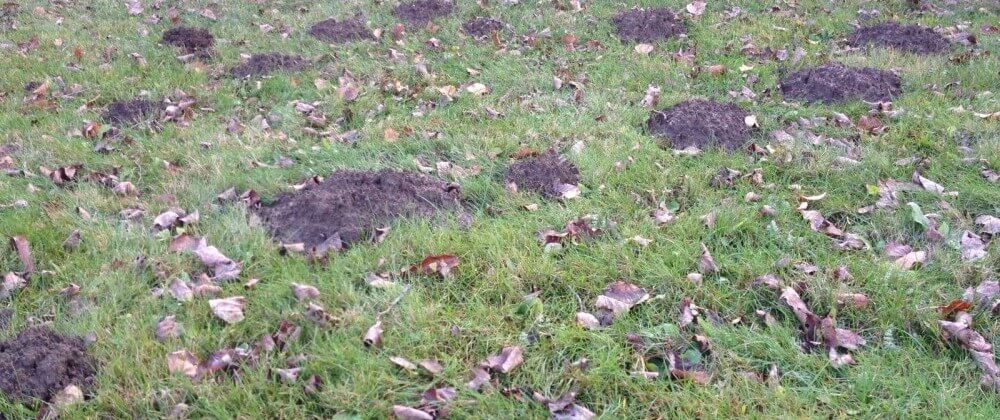Moles and voles remind me that not all lawn problems are directly related to weeds, disease or insect issues. Moles and voles can be real lawn nuisances and I have not really addressed these varmints in the past. Moles and voles are very different critters and an ounce of prevention can help keep your landscape free of both of these pests.
Moles are carnivorous animals that primarily eat earth worms, adult insects, and a variety of grubs in the soil. Voles by contrast like to eat grass blades, bulbs, bark, roots and succulent vegetation on trees and shrubs in and around your home. One is a meat eater and the other is a vegetarian, but both cause an eye sore with their tunneling and feeding activities in lawns and beds. Mole and vole activity peaks between September and April when they aggressively forage for food in your home landscape.
Neither moles nor voles hibernate, so they can cause damage year round. Moles have two kinds of tunnels, a surface feeding tunnel with the characteristic mound of soil pushed up, as well as a lower “interstate highway” for long distance travel to say the woods or a mulch bed. Voles’ tunnels are similar to the mole surface feeding tunnel, less the mound of dirt. You may have moles or voles but neither has any direct correlation to the other in terms of sharing tunnels or food source. Both varmints make a mess and their tunneling can drive home owners into frenzy much like the groundskeeper in the movie Caddyshack.
Now that we have outlined key differences between a mole and vole, what can be done? Regular mowing is very helpful toward discouraging a resident mole or vole, but is not the only preventative action available.
To discourage voles, keeping clean gardens, landscape beds and mulch depth to less than 2”removes potential nesting sites. Overgrown plants, excessive leaf litter and deep mulch in your gardens or landscape are ideal habitats for voles. Be sure to clean out all the fall leaf litter around your foundation to remove vole nesting sites before winter. Cutting your lawn short to 1.5” in November will help reduce a surface food source under the snow. Since voles are rodents, you can also use mouse traps placed around ornamental shrubs like you would in your home.
Moles meaty food source of worms, grubs, and insects ironically often means you have healthy soil under your lawn. While grub reduction can be helpful, it is not the moles’ main food or only food source. Since moles don’t like a lot of traffic or sound, I have seen sonic devices do a nice job on making a hostile habitat; creating a rock concert atmosphere if you will. I have mole baits which used as a last resort will take out your resident mole(s).
When it comes to controlling moles and voles, a tidy landscape is a healthy landscape. Weekly walks around your lawn and garden beds can help spot a mole or vole infestation before it becomes a big problem. Placing mouse traps for voles is a simple, yet effective means to protecting your valuable landscape.

Moles And Voles In Your Landscape
Tags:
chippers
, concord lawn care
, grubs
, upper valley lawn care
, moles
, voles
, bow lawn care
, Earthworms
, Landscapes

